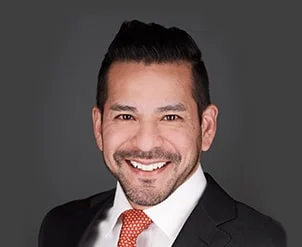Changes Coming To Student Loan Payments?

President-elect Donald Trump wants to tweak existing federal programs and help borrowers repay their school loans at a comfortable pace.
Under a plan he proposed in October 2016, monthly payments would be capped at 12.5 percent of the borrowers’ income for 180 months (15 years), and once the repayment period expires, any remaining student loan debt would be forgiven. The federal government already has similar programs, but the Trump plan would streamline program requirements and probably result in more money coming into the federal government, as both the repayment periods and payment caps would be slightly higher than they are now. Additionally, Education Secretary-designate Betsy DeVos has proposed risk-sharing between the school and federal government, which should reduce the number of defaults.
Despite what some people term the student loan “crisis,” Congress has shown almost no interest in taking action, although several lawmakers have introduced such bills in the recent past.
Current Law
Before lawmakers changed the Bankruptcy Code in 1975, student loans were dischargeable in bankruptcy just like any other unsecured debt. As Congress debated these changes, the student protests in the 1960s from groups like Students for a Democratic Society were still fresh on people’s minds. As a matter of fact, just before these debates began, about four million students protested the killing of student protestors at Kent State in nearby Ohio.
Some conservative lawmakers felt, rightly or wrongly, that some student protesters borrowed money to attend school and then promptly welched on those debts. Indeed, Congress changed the Bankruptcy Code to make student loans dischargeable in bankruptcy only upon showing of “undue hardship,” but lawmakers did not define this phrase.
It is impossible to know for sure, but anti-student bias may have been in the back of the judges in New York’s Second Circuit Court of Appeals when they issued Brunner v. New York State Higher Education Services Corporation. When Ms. Brunner asked a bankruptcy court to discharge her rather modest loans, despite the fact that she had just entered her repayment period and had apparently made little or no attempt to repay them, the court found no evidence of unemployment, illness, or other hardship. Furthermore, the court was clearly miffed that Ms. Brunner did not seek a forbearance or some other relief prior to asking for a discharge.
So, basically to prevent the Marie Brunners of the world from obtaining student loan discharges, the court came up with a three-prong test to determine “undue hardship:”
- The debtor cannot maintain a minimal standard of living (e. stay above the poverty line) if forced to repay the loans,
- The hardship is either permanent or likely to persist for the entire repayment period, and
- The debtor has made a good-faith effort to repay the loans.
Over the years, many judges criticized the Brunner Rule because of its harshness.
Current Law
These criticisms, and the mushrooming amount of student debt, have prompted some courts to change their approach to student loan discharge. Unfortunately for debtors in Illinois and Indiana, the Seventh Circuit reaffirmed the Brunner Rule in 2015 with very little discussion. In Tetzlaff v . Educational Credit Management Corporation, Mark Tetzlaff claimed he could not repay his law school loans, largely due to prior substance abuse and depression issues. However, the court was not persuaded, and ruled that Mr. Tetzlaff’s situation could improve, so therefore he was not eligible for a discharge.
Contact Experienced Lawyers
It is not easy to obtain student loan discharge under current law, but it is not impossible either. For a free consultation with an experienced bankruptcy lawyer in Chicago, contact the Bentz Holguin Law Firm, LLC. After hours appointments are available.
Resources:
webcache.googleusercontent.com/search?q=cache:http://www.moranlaw.net/student_loan_brunner.htm
scotusblog.com/wp-content/uploads/2015/10/tetzlaff-op-below.pdf
forbes.com/sites/zackfriedman/2016/12/14/trump-student-loan-repayment/#4a2b40344f65


